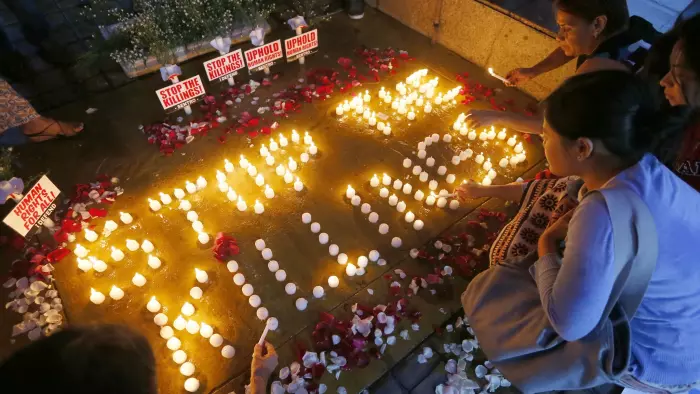“Patay City”
March 31, 2017
The streets are indistinguishable from a mass grave; bodies sprawled on the sidewalks, carnage littering the once tranquil streets of small Philippine towns and cities. Children, mothers, fathers, grandparents, and more have been hastily slain; but no war occurred here. President Rodrigo Duterte put the “war on drugs” into effect as soon as he took office on June 30th, 2016. Since then, the police alone have slain around 2,000 people; the total death toll being closer to 7,500. The carnage left behind as these numbers rise is everywhere imaginable. People are murdered on the sidewalks, in front of schools, homes, stores, on train tracks, and more.
When the killings first began, reporters called certain towns “Patay Cities” or “Cities of the Dead.” To “clean up” his country from drug use, Duterte began the now-controversial “tokhang” anti-drug drive, which is designed to identify drug users. So far, the police say around 1.2 million Filipinos have registered. This program is supposed to offer those registered the chance at rehabilitation, but many say it is insufficient or doesn’t exist at all. Soon after, the killing truly began. Substance (or ex-substance) users were being murdered by strangers in masks, friends, family, and even law enforcement. Their confessions may have actually brought them to their killers attention.
The president himself has vowed to execute 100,000 criminals and dump them into the Manila Bay, and he’s suggested that he has killed before.Maria Nusaiba, a woman who lost her son and grandson to the brutal killings, commented “I have nothing to say about [president] Duterte… even if we get angry there’s nothing we can do. We couldn’t get mad because the people voted for him.” Duterte even stated “you can expect 20,000 or 30,000 more [dead]” in the upcoming months. Public satisfaction with Duterte is at a staggering 76 percent.
However, the death continues to parade all through the Phillipines. One father, Ricardo Medina, knows about this first-hand. “I buried my son in the grave that was meant for me” he told reporters. The grave was right next to his first wife’s resting place, who had died 20 years earlier. Although Ricardo Medina is 66 years old and his health is quickly declining, he had no other choice due to poverty. His son, Ericardo, was killed in the brutal fashion that a drug dealer would be; but his family insists that he was not dealing. “He wasn’t a pusher.” Ricardo said (although he may have done meth at some point.) Now, the father faces fear every time one of his 17 remaining kids goes out after dark. Another man, Legaspi, says “a lot of [residents] are afraid. They are afraid that innocent civilians who are living in the community will get hit.”
The photographs taken by witnesses have brought the reality of the situation to others all around the world. Pictures of the brutality in the Philippines vary from those left on the side of the road to tragic scenes with family members crying over their murdered loved ones. One of the more famous photographs has been nicknamed the “Pieta” photograph. The photograph was taken after Jennilyn Olaryres had hurried from the small cloth shack she shared with her husband, Michael Olaryres, to a traffic interchange about 15 minutes away by foot. What she saw there, and how she reacted, arguably became the face of the Philippines war on drugs. She ran past the yellow police tape, and pushed through the crowd which huddled around her husband’s corpse. She then fell to her knees and clutched his body close to her chest; her grief etched onto her face. A sign placed near her husband’s dead body reads “drug pusher huwag tularan” meaning “I am a drug pusher, don’t imitate [me].” Michael was killed by anonymous men on motorcycles, which is not uncommon during this time. Jennilyn still insists that her husband was only a pedicab driver with no involvement in the drug trade. She left the neighborhood shortly after his death, and has not been traceable since.
As time goes by, more innocent people are being killed in the crossfire, and more Filipinos are beginning to question the true cost of Duterte’s mission.


